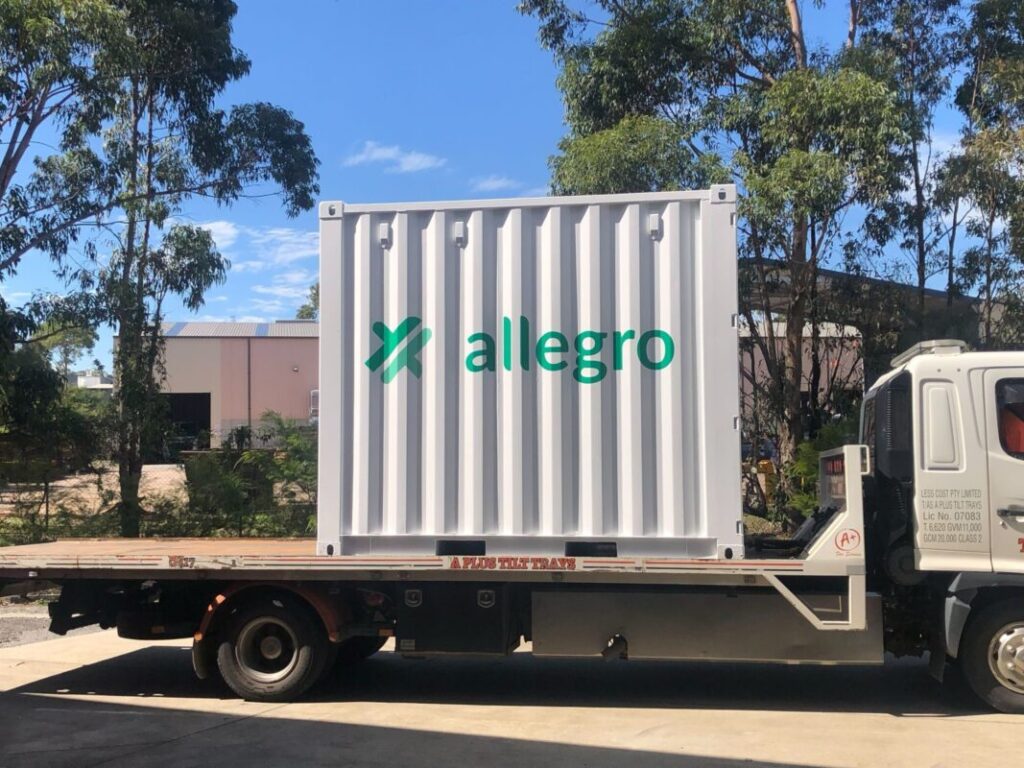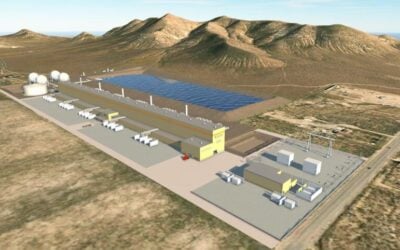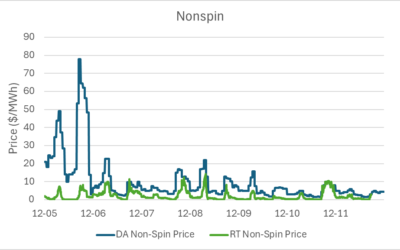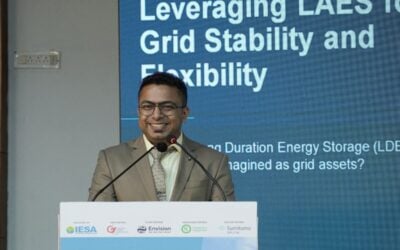
Allegro Energy, an Australian-based developer of water-based redox flow battery energy storage solutions, has claimed its microemulsion flow battery (MeFB) could be tailored to support the “exponential growth” of data centres.
According to the company, the MeFB long-duration energy storage (LDES) technology could be tailored to the data centres, providing the facilities with clean power.
The Allegro LDES flow batteries are designed to grow parallel to a data centre’s needs. This allows incremental investment and deployment, making this model ideal for both hyper-scale facilities and edge data centres.
What is Allegro Energy’s MeFB technology?
Allegro Energy makes water-based redox flow batteries and supercapacitors, which contain no scarce materials and include fully recyclable components.
Try Premium for just $1
- Full premium access for the first month at only $1
- Converts to an annual rate after 30 days unless cancelled
- Cancel anytime during the trial period
Premium Benefits
- Expert industry analysis and interviews
- Digital access to PV Tech Power journal
- Exclusive event discounts
Or get the full Premium subscription right away
Or continue reading this article for free
These integrate a water-based electrolyte, which makes energy storage less expensive and safer. The company has previously said this “opens up the ability to address needs at a global scale”.
Last year, Allegro attracted AU$17.5 million (US$11.54 million) in Series A funding from investors including Origin Energy, Melt Ventures, and Impact Ventures. Then, in February 2025, the Australian government provided AU$1.85 million to help support the development of the MeFB technology.
The redox flow battery technology will soon debut at Origin’s Eraring Power Station, a black coal-fired plant in New South Wales. The plant is also home to one of the country’s largest battery energy storage system (BESS) developments.
Data centres powered by renewables
According to Allegro Energy’s CEO and co-founder, Dr Thomas Nann, the marriage of the MeFB technology with data centre infrastructure could help power these centres with clean energy.
“The exponential growth of generative AI, cloud computing, and digital services has made energy a critical chokepoint in data infrastructure,” Dr Nann said.
“We believe the future of high-performance computing does not need to come at the cost of the planet. With our technology, data centres can be powered entirely by renewables, supported by reliable, cost-effective long-duration storage.”
Growth in data centres could ‘transform the global energy sector’
Data centre infrastructure is set to experience rapid expansion as it races to meet the demand for AI, cryptocurrencies, and cloud services. However, these will come with new challenges for society, in particular for the global energy sector.
All the technologies housed in data centres demand high amounts of electricity, not least the cooling systems necessary to prevent hardware failures. The critical components of a data centre – routers, switches, firewalls, storage systems, servers, and application-delivery controllers – all generate significant heat.
Beyond this, data centres are operational 24 hours a day, every day of the year. They might run multiple servers simultaneously on top of other high-density computing.
Because of this, a report released by the International Energy Agency (IEA) earlier this year claimed that global electricity demand from data centres is set to “more than double” by 2030 to more than 945TWh annually.
One region that could see significant growth is the US. Dr. Brent Nelson, PhD, managing director of markets and strategy at energy software and consulting group Ascend Analytics, told Energy-Storage.news earlier this year that data centres are becoming a catalyst for the “unrealistic and impossible” forecasts for load growth in Texas’ ERCOT market over the remainder of the decade.
In Australia, Allegro Energy’s home country, the current federal government’s key aim is to boost productivity in the country using cloud and AI capabilities. Because of this, data centre growth is expected to double to 3,100MW by 2030.
Plans have already been announced to couple these facilities with energy storage and variable renewable energy generation, exhibited by US technology giant Amazon’s pledge to invest AU$20 billion to expand Australian data centre infrastructure with utility-scale solar PV plants and wind plants.
Our publisher, Solar Media, will host the Battery Asset Management Summit Australia 2025 on 26-27 August in Sydney. You can get 20% off your ticket using the code ESN20 at checkout.





